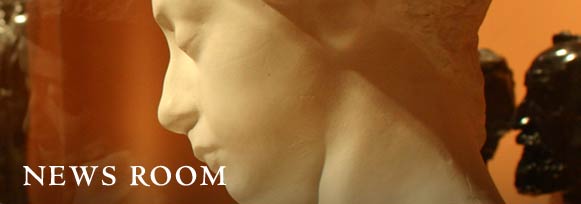Paintings from the Viceroyalty of Peru Premiere at Cantor Arts Center
The Virgin, Saints, and Angels: South American Paintings 1600–1825 from the Thoma Collection
September 20–December 31, 2006
Stanford, California — The Cantor Arts Center at Stanford University presents “The Virgin, Saints, and Angels: South American Paintings 1600–1825 from the Thoma Collection,” September 20 – December 31, 2006. This exhibition of 55 paintings surveys the pictorial tradition of the Viceroyalty of Peru, which encompassed present day Peru, Paraguay, Uruguay, Bolivia, Ecuador, Colombia, parts of Chile and Argentina, and Panama. This is the first North American exhibition to focus exclusively on the paintings of South America’s Viceregal period. “The Virgin, Saints, and Angels” travels to other North American venues after premiering at Stanford.
This exhibition offers a rare opportunity to study the distinctive pictorial traditions that evolved as European imagery became naturalized in the Andes within a new multiracial and multicultural society. The missionaries who followed on the heels of the conquistadors taught local artisans how to use European mediums and Christian iconography in order to produce images of God, the Trinity, the Virgin Mary, and endless saints and angels, which were used in the campaign to convert the indigenous people to Catholicism. They also became familiar with the European portrait tradition, enabling them to portray the distant kings of Spain who ruled from afar through their viceroys and other notables.
Initially, oil paintings in South America were provided by artists from Italy, Spain, and Flanders. Before long the Europeans were greatly outnumbered by native artists who had quickly become proficient, decorating churches and public buildings. Innumerable easel paintings were also produced, often in large workshops with various artists contributing specialized skills to the finished art work. Several of the Thoma collection paintings retain their original, richly carved frames, which are part of this workshop tradition.
Created for the Church, the government, and private individuals, these easel paintings found homes throughout Spain’s territories in the New World. Over time, many were also exported abroad. Although the Cuzco School is the best known, other regional styles evolved in centers elsewhere in Peru, Bolivia, Columbia, and Ecuador. Including examples by Italian, Flemish, Spanish, Creole, mestizo, and Indian hands, the Thoma collection offers a compelling survey of the diverse regional schools and illustrates the range of religious and secular subject matter favored in the region.
The exhibition is divided into several sections: early European-influenced images; proselytizing images and images teaching Christian dogma; cult images such as the Virgin of Copacabana, Our Lady of Pomato, and Our Lady of Cayma; narrative works celebrating the Life of the Virgin Mary; and portraits.
“The Virgin, Saints, and Angels” was organized by Cantor Arts Center Chief Curator Bernard Barryte and curated by Dr. Suzanne Stratton-Pruitt, curator of the Thoma collection. The fully illustrated catalogue that accompanies the exhibition is co-published by Skira and includes essays offering new perspectives on the art of Spanish South America by scholars from Peru, Japan, Canada, and the United States. The exhibition is augmented by a series of lectures organized by Stanford’s Center for Latin American Studies. Docents offer tours of the exhibition Thursdays at 12:15 p.m., Saturdays and Sundays at 2 p.m. Admission to the Center, the exhibition, and associated programs is free.
The exhibition and its catalogue are made possible by support from the Clumeck Fund and a grant from funds established by the late Drs. A. Jess and Ben Shenson.



